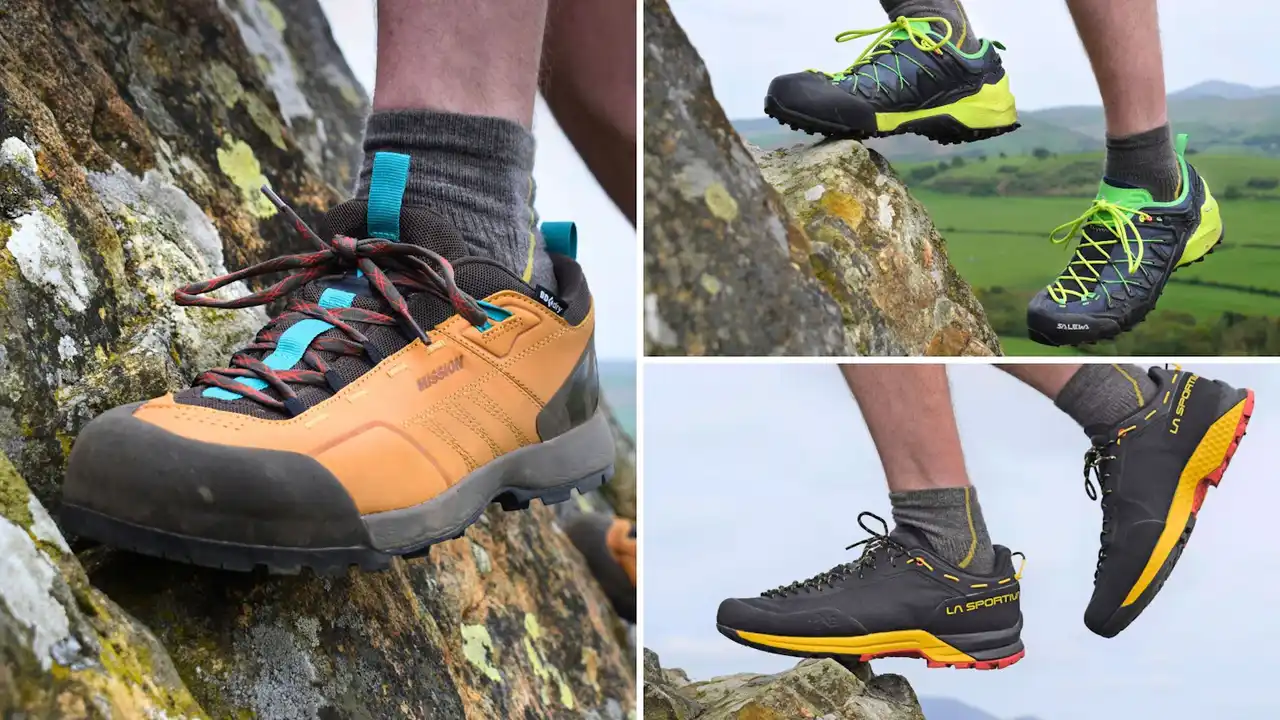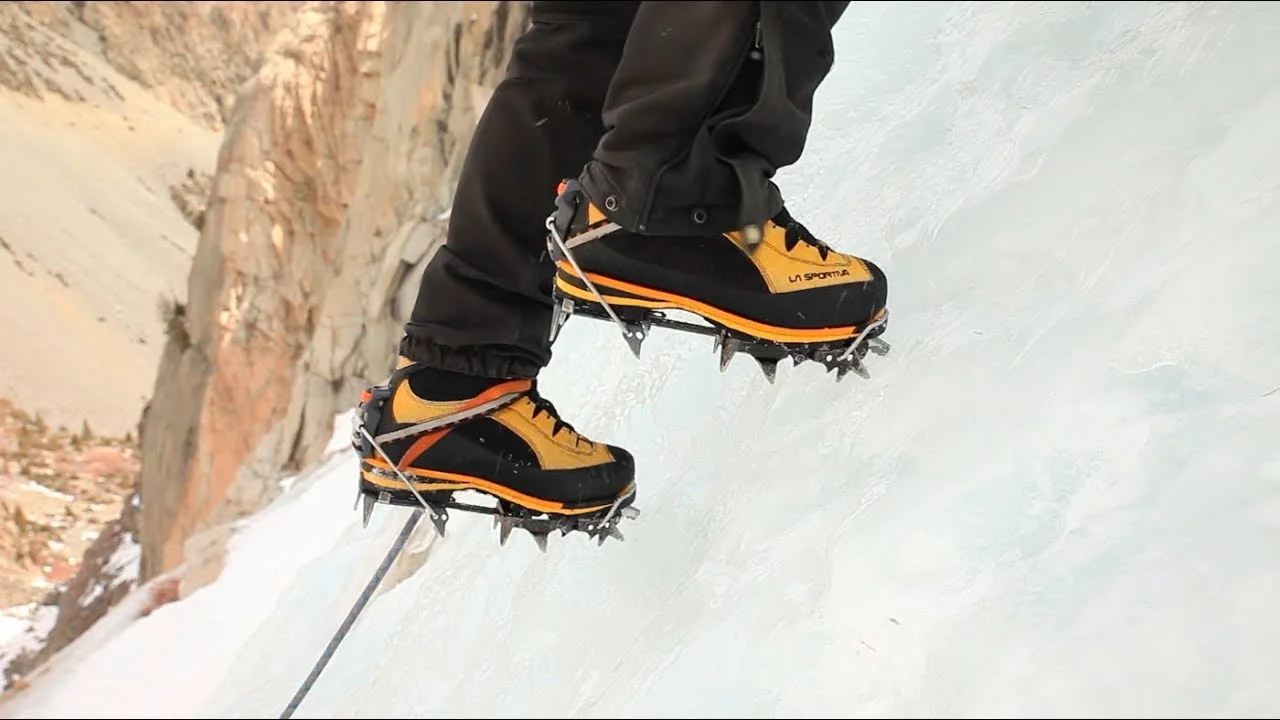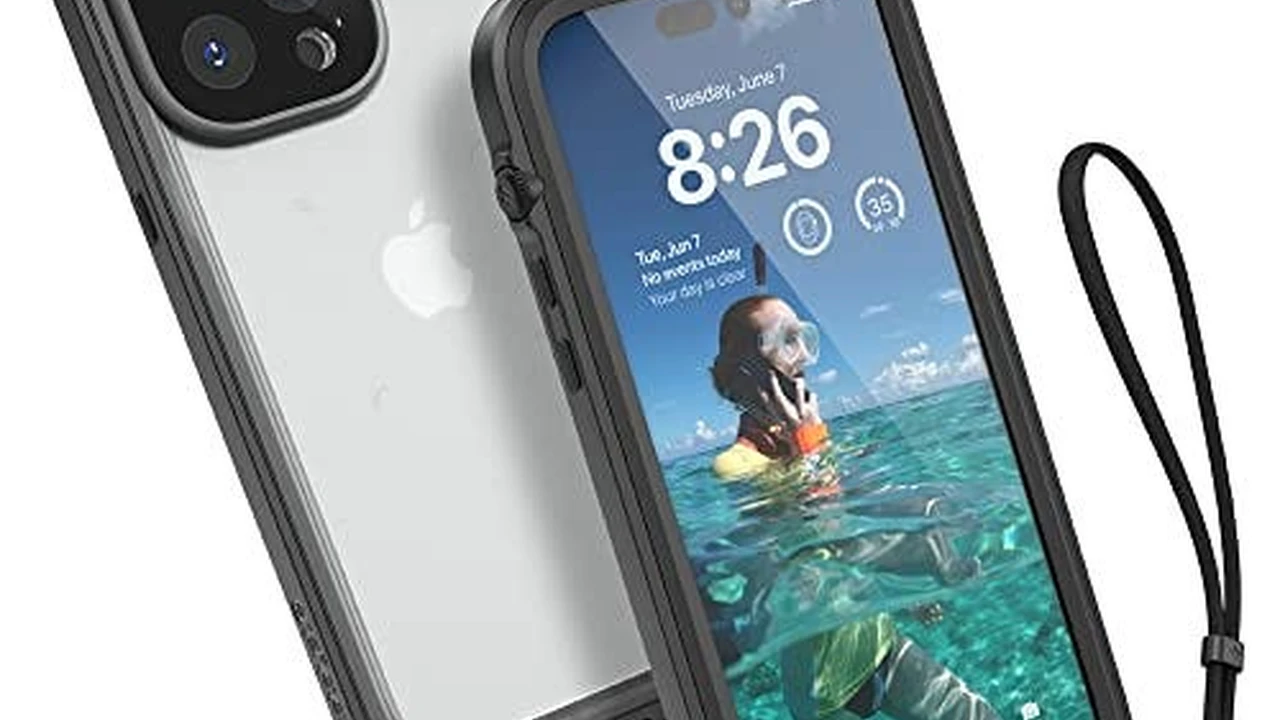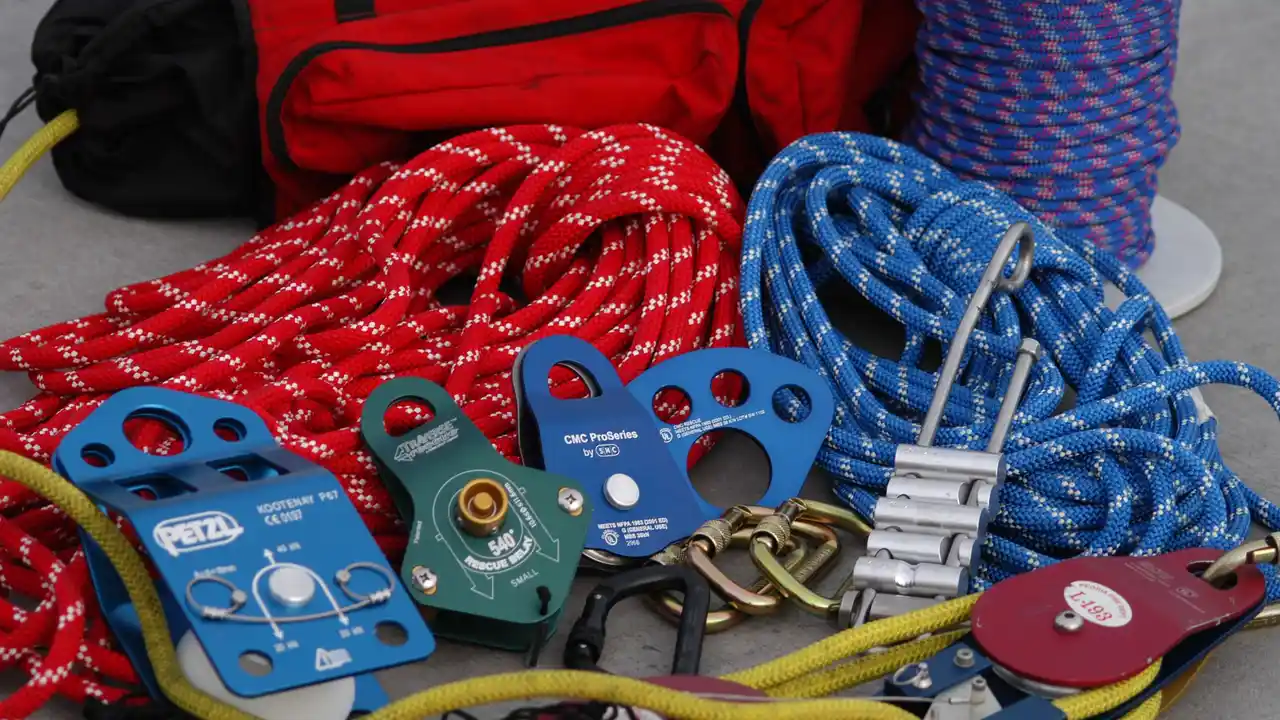Best Hiking Poles for Seniors and Beginners
{ "article": [ { "title": "Best Hiking Poles for Seniors and Beginners", "meta_description": "Enhance stability with the best hiking poles for seniors and beginners. Compare ergonomic grips, shock absorption, and ease of adjustment.", "content": "Enhance stability with the best hiking poles for seniors and beginners. Compare ergonomic grips, shock absorption, and ease of adjustment.\n\n
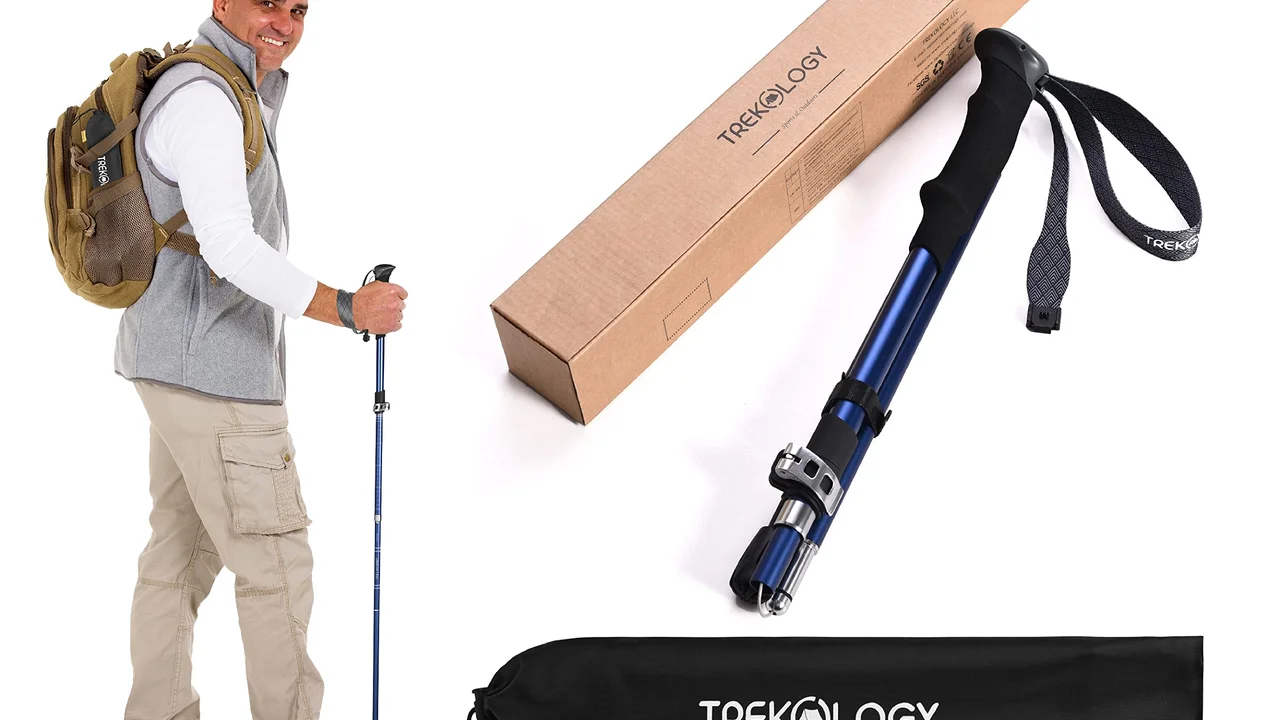
Hey there, fellow outdoor enthusiasts! Whether you're just starting your hiking journey or looking for a little extra support on the trails as you get older, hiking poles can be an absolute game-changer. They're not just for hardcore mountaineers anymore; in fact, they offer incredible benefits for seniors and beginners alike. We're talking about improved balance, reduced strain on your joints, and even a bit of an upper body workout. So, let's dive deep into everything you need to know about picking the perfect pair of hiking poles.
\n\nWhy Hiking Poles Are Your New Best Friends: Benefits for All Ages and Skill Levels
\n\nYou might be wondering, \"Do I really need hiking poles?\" The short answer is, probably! Especially if you're a beginner still finding your footing on uneven terrain, or a senior looking to maintain stability and reduce impact. Here’s a breakdown of why these simple tools are so beneficial:
\n\n- \n
- Enhanced Stability and Balance: This is perhaps the most significant benefit, especially on tricky trails. Hiking poles give you two extra points of contact with the ground, significantly reducing your risk of falls. Think of them as an extension of your legs, helping you navigate roots, rocks, and slippery surfaces with confidence. \n
- Reduced Joint Strain: Every step you take, especially downhill, puts stress on your knees, hips, and ankles. Hiking poles can offload a significant amount of this pressure, sometimes up to 25% of the impact. This is huge for preventing soreness and long-term wear and tear on your joints, making longer hikes more enjoyable and sustainable. \n
- Improved Posture: Using poles encourages a more upright posture, which can alleviate back pain and improve breathing efficiency. No more hunching over as you trudge up that incline! \n
- Increased Uphill Power: While they reduce strain downhill, poles also provide leverage for uphill climbs. You can push off them, engaging your arms and shoulders, which helps propel you forward and conserves leg energy. \n
- Better Rhythm and Pace: Once you get the hang of it, using poles can help you establish a consistent rhythm, which can make your hiking feel more efficient and less tiring over long distances. \n
- Navigating Obstacles: From testing the depth of a puddle to pushing aside overgrown branches, poles are incredibly versatile for navigating various trail obstacles. \n
Key Features to Look For: What Makes a Great Hiking Pole?
\n\nNot all hiking poles are created equal. When you're shopping around, there are several key features you'll want to consider to ensure you get a pair that’s right for you. Let's break them down:
\n\nGrip Comfort and Ergonomics: Your Hands Will Thank You
\n\nThe grip is where your hand meets the pole, so comfort is paramount. You'll be holding these for hours, so a good grip can prevent blisters and discomfort.
\n\n- \n
- Cork: This is often considered the gold standard. Cork molds to your hand over time, wicks away sweat, and provides excellent insulation in both hot and cold weather. It's durable and feels natural. \n
- Foam: EVA foam grips are soft, absorbent, and comfortable. They're a good choice for those who prefer a softer feel and are generally lighter than cork. They might not be as durable as cork in the long run. \n
- Rubber: Rubber grips offer good durability and shock absorption, especially in colder conditions. However, they can cause sweaty hands in warm weather and might not be as comfortable as cork or foam for extended use. \n
Also, look for ergonomic designs that fit naturally in your hand. Some grips are angled slightly forward, which can feel more natural for some users.
\n\nAdjustability and Locking Mechanisms: Finding Your Perfect Length
\n\nMost hiking poles are adjustable, allowing you to customize their length for different terrains and personal height. This is crucial for proper technique and comfort.
\n\n- \n
- Flip-Lock (Lever Lock): These are generally considered the most reliable and easiest to use, especially with gloves on or in cold weather. You simply flip a lever to loosen or tighten the pole sections. They offer strong holding power and are less prone to freezing than twist locks. \n
- Twist-Lock: These mechanisms involve twisting the pole sections to tighten or loosen them. While often lighter and more compact when collapsed, they can sometimes be finicky, especially if dirt or ice gets into the mechanism, and might require more hand strength to secure properly. \n
- Combination Locks: Some poles use a combination of both, often a flip-lock for the main adjustment and a twist-lock for a smaller, fine-tuning section. \n
For beginners and seniors, flip-locks are generally recommended due to their ease of use and reliability.
\n\nShock Absorption: Cushioning Your Every Step
\n\nSome hiking poles come with internal springs that absorb impact, similar to shock absorbers in a car. This feature can be a real blessing for your joints, especially on long descents.
\n\n- \n
- Benefits: Reduces stress on knees, ankles, and hips; can make hiking feel smoother; good for users with pre-existing joint issues. \n
- Considerations: Shock absorption adds a bit of weight and complexity to the poles. Some experienced hikers prefer poles without shock absorption for a more direct feel of the terrain. For seniors and beginners, however, the added comfort often outweighs the slight weight penalty. \n
Material Matters: Aluminum vs. Carbon Fiber
\n\nThe material of your hiking poles affects their weight, durability, and price.
\n\n- \n
- Aluminum: Generally more affordable and very durable. Aluminum poles can bend under extreme stress but are less likely to snap. They're a great choice for beginners and those on a budget, offering excellent value. \n
- Carbon Fiber: Lighter and stiffer than aluminum, making them ideal for long-distance hikers who prioritize weight savings. However, carbon fiber is more brittle and can snap under sharp impact, though it's generally very strong. They are also typically more expensive.
For seniors and beginners, aluminum poles often strike the best balance between durability, performance, and cost.
\n\nWeight and Packability: Easy to Carry, Easy to Store
\n\nLighter poles reduce fatigue over long distances, but sometimes come at a higher price or with less durability. Consider how you'll be using them. If you plan to attach them to your backpack frequently, look for poles that collapse compactly.
\n\n- \n
- Collapsed Length: Shorter collapsed lengths are better for packing inside luggage or attaching to smaller backpacks. \n
- Number of Sections: Most poles have 2 or 3 sections. 3-section poles generally collapse shorter. Some newer poles are Z-fold or folding poles, which collapse very compactly but might not be as adjustable or durable as telescopic poles. \n
Baskets and Tips: Adapting to Different Terrains
\n\nThe small accessories on your poles make a big difference.
\n\n- \n
- Baskets: Small baskets prevent poles from sinking too deep into soft ground or mud. Larger snow baskets are essential for winter hiking and snowshoeing. Many poles come with interchangeable baskets. \n
- Tips: Carbide or steel tips offer excellent grip on hard surfaces like rock and ice. Rubber tips are often included or sold separately and are great for protecting the tips on pavement or delicate trails, and for reducing noise. \n
Top Recommended Hiking Poles for Seniors and Beginners: Our Picks
\n\nAlright, let's get to some specific recommendations. We've chosen these poles based on their comfort, ease of use, durability, and value, keeping seniors and beginners firmly in mind. Prices are approximate and can vary.
\n\n1. Black Diamond Trail Ergo Cork Trekking Poles
\n\nWhy we love them: These are a fantastic all-around choice, often considered a benchmark for quality and comfort. The cork grips are incredibly comfortable and mold to your hands, reducing sweat and improving grip over time. The ergonomic angle of the grip is a subtle but significant comfort feature. They use reliable FlickLock Pro adjustment mechanisms, which are super easy to use and very secure. Made from durable aluminum, they can take a beating.
\n\n- \n
- Key Features: Ergonomic cork grips, FlickLock Pro adjustment, durable aluminum construction, interchangeable carbide tech tips and low-profile trekking baskets. \n
- Ideal for: Hikers who prioritize comfort and reliability, suitable for all types of terrain. \n
- Price Range: $120 - $150 USD \n
- User Scenario: Imagine a senior hiker tackling varied terrain in a national park. The ergonomic cork grips provide comfort for hours, and the easy-to-adjust FlickLock system means they can quickly change pole length when going uphill or downhill without fumbling. The aluminum construction ensures they can lean on them confidently without worrying about breakage. \n
2. Leki Makalu Lite Cor-Tec Trekking Poles
\n\nWhy we love them: Leki is renowned for its quality, and the Makalu Lite Cor-Tec poles are no exception. They feature Leki's Aergon Cor-Tec grips, which are a blend of cork and rubber, offering excellent comfort and sweat management. The Speed Lock 2 Plus system is incredibly fast and secure for length adjustments. These poles are a bit lighter than some aluminum options, making them great for longer days on the trail without sacrificing durability.
\n\n- \n
- Key Features: Aergon Cor-Tec grips, Speed Lock 2 Plus adjustment, lightweight HTS 6.5 aluminum, interchangeable baskets. \n
- Ideal for: Hikers seeking a balance of lightweight design, comfort, and robust locking mechanisms. \n
- Price Range: $140 - $170 USD \n
- User Scenario: A beginner hiker who wants a premium feel without breaking the bank. The lightweight design makes them easy to swing and carry, reducing arm fatigue. The Speed Lock 2 Plus system is intuitive, allowing them to quickly adapt to changing trail conditions, whether it's a steep ascent or a gentle descent. \n
3. REI Co-op Traverse Power Lock Trekking Poles
\n\nWhy we love them: REI's in-house brand often delivers excellent value, and the Traverse Power Lock poles are a prime example. They offer a great combination of features at a more accessible price point. They typically come with comfortable foam grips, reliable Power Lock 3.0 adjustment mechanisms, and durable aluminum shafts. They're a solid, no-frills option that performs well across various conditions.
\n\n- \n
- Key Features: Comfortable foam grips, Power Lock 3.0 adjustment, durable aluminum construction, interchangeable baskets. \n
- Ideal for: Budget-conscious beginners or seniors who want reliable performance without a hefty price tag. \n
- Price Range: $90 - $110 USD \n
- User Scenario: A new hiker who isn't sure if poles are for them and wants to try them out without a huge investment. These poles provide all the essential benefits – stability, joint relief, and uphill assistance – in a dependable package. The foam grips are soft on the hands, and the Power Lock system is straightforward to operate. \n
4. Montem Ultra Strong Trekking Poles
\n\nWhy we love them: As the name suggests, these poles are built for strength and durability. Made from 7075 aluminum, they are incredibly robust, making them a great choice for heavier users or those who tend to be tough on their gear. They feature comfortable EVA foam grips and quick-release flip locks. They also often come with a full set of accessories, including mud baskets, snow baskets, and rubber tips, adding to their versatility.
\n\n- \n
- Key Features: Ultra-strong 7075 aluminum, comfortable EVA foam grips, quick-release flip locks, full accessory kit. \n
- Ideal for: Hikers who need maximum durability and stability, especially those who are heavier or frequently hike on challenging terrain. \n
- Price Range: $60 - $80 USD \n
- User Scenario: A senior hiker who needs maximum support and confidence on the trail. The robust construction means they can put their full weight on the poles without concern. The included accessories make them adaptable for different seasons and trail types, from muddy paths to snowy trails. \n
5. Cascade Mountain Tech Carbon Fiber Quick Lock Trekking Poles
\n\nWhy we love them: If you're looking to dip your toes into carbon fiber without the premium price tag, these are an excellent option. They offer the lightweight benefits of carbon fiber, which can significantly reduce arm fatigue on longer hikes. They feature comfortable cork grips and reliable quick-lock mechanisms. While carbon fiber is generally more brittle than aluminum, these poles offer a good balance of weight savings and durability for general hiking.
\n\n- \n
- Key Features: Lightweight carbon fiber construction, comfortable cork grips, quick-lock adjustment, interchangeable baskets. \n
- Ideal for: Hikers who want a lighter pole for reduced fatigue, especially on longer hikes, at a more affordable carbon fiber price. \n
- Price Range: $70 - $100 USD \n
- User Scenario: A beginner who is quickly progressing and wants to upgrade to lighter gear, or a senior who finds heavier poles tiring. The carbon fiber construction makes them feel almost weightless, and the cork grips ensure comfort even on extended treks. They're perfect for day hikes and multi-day trips where every ounce counts. \n
How to Use Hiking Poles Effectively: Getting Your Technique Down
\n\nHaving the right poles is one thing; knowing how to use them is another! Proper technique maximizes their benefits and prevents awkward stumbling. Don't worry, it's not rocket science, but a few tips can make a big difference.
\n\nAdjusting Pole Length: The Golden Rule
\n\nThis is crucial. When standing upright with your poles planted on the ground next to your feet, your elbows should form a 90-degree angle. This is your starting point.
\n\n- \n
- Uphill: Shorten your poles by about 5-10 cm (2-4 inches). This allows you to plant them closer to your body and push off more effectively. \n
- Downhill: Lengthen your poles by about 5-10 cm (2-4 inches). This gives you more reach for stability and helps absorb impact further down the trail, protecting your knees. \n
- Flat Terrain: Stick to the 90-degree elbow rule. \n
Basic Walking Technique: The Rhythm of the Trail
\n\nThere are two main techniques:
\n\n- \n
- Opposite Arm, Opposite Leg (Diagonal Stride): This is the most natural and common method. As your right foot steps forward, your left pole swings forward, and vice versa. It mimics your natural walking gait and helps maintain balance and rhythm. \n
- Double Pole Plant (Simultaneous Plant): This is useful for steep ascents or descents, or when you need extra stability. You plant both poles simultaneously in front of you, then step forward. This provides a strong, stable base. \n
Using Wrist Straps: More Than Just a Leash
\n\nMany beginners overlook the wrist straps, but they're essential for proper pole use. Don't just loop your hand through them; thread your hand up through the bottom of the strap, then grasp the grip. This allows you to push down on the strap, transferring power from your forearm to the pole, rather than just gripping the handle tightly. It reduces hand fatigue and gives you more control.
\n\nPractice Makes Perfect: Get Comfortable Before the Big Hike
\n\nBefore you hit a challenging trail, take your new poles for a spin around your neighborhood or a local park. Get a feel for the adjustments, the grip, and the rhythm. The more comfortable you are, the more beneficial they'll be on the trail.
\n\nMaintenance and Care: Keeping Your Poles in Top Shape
\n\nTo ensure your hiking poles last for many adventures, a little care goes a long way.
\n\n- \n
- Clean Them Regularly: After each hike, especially if it was muddy or wet, extend your poles fully and wipe down each section with a damp cloth. Pay attention to the locking mechanisms to remove any dirt or grit. \n
- Dry Them Thoroughly: Before collapsing and storing your poles, make sure they are completely dry. This prevents corrosion and mildew, especially with internal locking mechanisms. \n
- Check Locking Mechanisms: Periodically inspect your flip locks or twist locks to ensure they are clean and functioning smoothly. If a flip lock feels loose, you can usually tighten the screw with a small screwdriver. \n
- Replace Worn Tips and Baskets: The rubber or carbide tips will wear down over time. Replace them when they show significant wear to maintain grip. Baskets can also get lost or damaged, so keep spares if you hike in varied conditions. \n
- Store Properly: Store your poles in a dry place, ideally slightly extended to prevent the internal mechanisms from seizing up. \n
Common Questions About Hiking Poles for Beginners and Seniors
\n\nDo I need one pole or two?
\n\nWhile some people use a single pole, two poles offer significantly more stability, balance, and joint relief. For seniors and beginners, two poles are almost always recommended for maximum benefit.
\n\nAre shock-absorbing poles always better?
\n\nNot always, but often for seniors and beginners. They provide excellent joint protection, especially on descents. If you have knee or hip issues, they're a great choice. If you're a younger, more experienced hiker with no joint concerns, you might prefer non-shock-absorbing poles for their lighter weight and more direct feel.
\n\nHow do I know what length poles to buy?
\n\nMost adjustable poles will fit a wide range of heights. The key is to ensure that when you hold the pole with the tip on the ground, your elbow forms a 90-degree angle. Check the manufacturer's recommended height ranges for specific models.
\n\nCan I use hiking poles for trail running?
\n\nYes, many trail runners use poles, especially for steep ascents and descents. For trail running, you might prefer lighter carbon fiber poles and a more compact Z-fold design for quick deployment and stowing.
\n\nWhat's the difference between trekking poles and walking poles?
\n\nThe terms are often used interchangeably. However, 'trekking poles' generally refer to more robust, adjustable poles designed for varied terrain and longer hikes, often with interchangeable baskets. 'Walking poles' might sometimes refer to simpler, fixed-length poles primarily for urban walking or light trails.
\n\nAre hiking poles allowed on airplanes?
\n\nGenerally, hiking poles are not allowed in carry-on luggage due to security restrictions (they can be considered a bludgeon). You'll need to pack them in your checked luggage. Make sure they collapse compactly enough to fit in your suitcase.
\n\nSo there you have it! Hiking poles are an invaluable tool for anyone looking to enhance their hiking experience, especially for seniors seeking stability and beginners building confidence on the trails. With the right pair and a little practice, you'll be tackling those paths with newfound ease and enjoyment. Happy trails!
" } ] }:max_bytes(150000):strip_icc()/277019-baked-pork-chops-with-cream-of-mushroom-soup-DDMFS-beauty-4x3-BG-7505-5762b731cf30447d9cbbbbbf387beafa.jpg)



